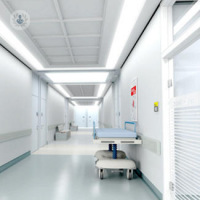Colonoscopy
Dr Devinder Bansi - Gastroenterology
Created on: 11-13-2012
Updated on: 03-29-2023
Edited by: Sophie Kennedy
What is a colonoscopy?
A colonoscopy is a type of endoscopy that is used to examine the colon and small intestine in order to detect any abnormalities (inflammation, ulcers, polyps, etc.). The procedure can take anywhere from twenty to sixty minutes, depending on what is found during the procedure.

What does a colonoscopy involve?
It is performed using a thin, flexible tube (endoscope) that is inserted through the anus and has a video camera and light at the end to record the organs and walls it passes through.
Why is it performed?
A colonoscopy may be performed for various reasons:
- to locate any polyps or adenomas
- to screen for colon cancer
- to explore the cause of unexplained changes in bowel habits
- to evaluate symptoms of pain, rectal bleeding, or weight loss
- in cases of iron-deficiency anaemia
- for the diagnosis of Crohn's disease or ulcerative colitis
At what age should I get a colonoscopy?
The recommended age to start having colonoscopy procedures to screen for colorectal cancer is forty-five to fifty years old. According to the NHS, all patients ages sixty to seventy-four in the UK who are registered with a GP will also be sent home screening kits to collect stool samples every two years. However, if you are suffering with any symptoms, you should consult a specialist at any age for a possible colonoscopy.
Depending on your risks, your doctor will assess and tell you how often you should have a colonoscopy. Common risk factors include, but are not limited to:
- previously extracted polyps
- prior history or family history of colorectal cancer
- irritable bowel disease (IBD)
How do I prepare for a colonoscopy?
Before the test you should follow instructions for cleansing the bowel to make it easier for the doctor to observe it. This will involve drinking only liquids in the twenty-four hours before the procedure, and taking a solution that will help you empty your bowels. During the procedure, you will be partially or fully sedated. You will be placed on your side and the doctor will insert the endoscope through the anus to pass through your large intestine.
Make sure to let your doctor know if you have any pre-existing conditions and/or regularly taken medication. These may include:
- pregnancy
- heart conditions
- lung conditions
- any allergies to medications
- any other medications you take that may affect blood clotting
What do you feel during the procedure?
A colonoscopy is usually well tolerated and is rarely painful. At most, you will feel pressure, swelling, or cramping during the procedure. Less than one per cent of patients will experience serious complications.
What happens afterwards?
Patients will remain in a recovery room until discharged, when they will be driven home by a family member or friend. Your doctor will advise when to return normal diet and regular medications. There may be some cramping and the sensation to pass gas, though this should quickly pass.
What are the risks of a colonoscopy?
Risks of a colonoscopy are rare, and occur in fewer than 0.1% of cases, as it is a routine procedure. Possible risks or complications include:
- belly pain or discomfort
- sensation to pass gas
- dehydration or electrolyte imbalance from colonoscopy preparation
More rare risks and complications include:
- bleeding at biopsy site if a biopsy was taken
- a negative or allergic reaction to the sedative, if used
- rectal wall or colon perforation
- infection
Call your doctor or hospital immediately if you are experiencing:
- severe stomach pain
- fever
- a firm belly
- vomiting
- dizziness
- severe or frequent bloody stool
- persistent bleeding from the rectum
What happens if there are abnormal results?
If the specialist feels that a more accurate evaluation is necessary, they will obtain a biopsy of the lining of the bowel for analysis. If polyps are found during the procedure, these can be removed straight away.
Are there alternatives to this test?
There is now an alternative to traditional colonoscopy that is much less invasive and does not require sedation. This is called a virtual colonoscopy, or otherwise knows as a CT pneumocolon which is an examination that uses images of the inside of the bowel and colon obtained by means of computerised tomography (CT or CAT scan) instead of images taken by the colonoscopy camera. This type of colonoscopy is used for specific indications of constipation and pain, and is used for screening. This will be followed up by a colonoscopy if any issues are found. If you are experiencing symptoms such as bleeding and diarrhoea, a colonoscopy will be used.
Other alternatives include a rectosigmoidoscopy, however it does not cover as much of the colon as a traditional colonoscopy, and home screening tests for bowel cancer by collecting stool samples.















